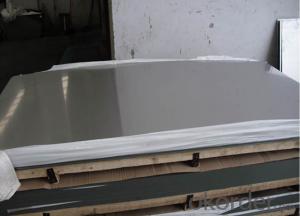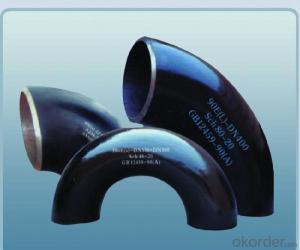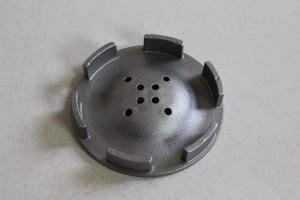409 Stainless Steel
409 Stainless Steel Related Searches
Best Paint For Stainless Steel Blanket Insulation For Steel Buildings Primer For Galvanized Steel Foam Filter For Stainless Steel H S Code For Stainless Steel Surface Grinding Wheels For Stainless Steel Surface Grinding Wheels For Hardened Steel Hole Saw For Stainless Steel Paint For Stainless Steel Stainless Steel For BbqHot Searches
Steel Mesh Panels For Sale Price For Stainless Steel Scrap Scrap Price For Stainless Steel Price For Stainless Steel Stainless Steel Tank For Sale Stainless Steel Sheets For Sale Cheap High Tea Sets For Sale Stainless Steel Tanks For Sale Stainless Steel For Sale High Density Fiberboard For Sale Solar Hot Water Collectors For Sale Scaffolding For Sale In Uae Scaffolding For Sale In Ireland Scaffolding For Sale In Houston Type Of Inverter For Solar Price Of Shipping Containers For Sale Types Of Inverter For Solar Stock Price For Aluminum Used Solar Inverter For Sale Steel Mesh Panels For Sale409 Stainless Steel Supplier & Manufacturer from China
Okorder.com is a professional 409 Stainless Steel supplier & manufacturer, offers integrated one-stop services including real-time quoting and online cargo tracking. We are funded by CNBM Group, a Fortune 500 enterprise and the largest 409 Stainless Steel firm in China.Hot Products
FAQ
- Using stainless steel sheets in the medical industry offers several benefits: 1. Maintaining Hygiene and Cleanliness: Stainless steel's non-porous nature makes it easy to clean and disinfect, making it an excellent option for medical equipment, surgical instruments, and hospital furniture. It resists bacteria, mold, and other pathogens, ensuring a hygienic environment. 2. Ensuring Longevity and Durability: Stainless steel can withstand harsh conditions, including high temperatures, humidity, and corrosive substances. This durability extends the lifespan of medical equipment and instruments, reducing the need for frequent replacements. 3. Providing Strength and Safety: Stainless steel sheets offer exceptional strength and structural integrity, making them suitable for applications that require resistance to impact and pressure. This is crucial in the medical industry, where instruments and equipment are constantly utilized and handled. 4. Resisting Stains and Corrosion: Stainless steel is highly resistant to stains and corrosion, even in aggressive environments. This property is essential in medical facilities where exposure to various chemicals and liquids is common. The resistance to corrosion ensures that stainless steel sheets remain intact and do not release harmful substances into the environment. 5. Enhancing Aesthetic Appeal: Stainless steel sheets have a sleek and modern appearance that contributes to the overall aesthetic appeal of medical equipment and instruments. This creates a positive impression on patients, instilling confidence in the quality and cleanliness of the medical facility. 6. Promoting Recyclability: Stainless steel is a sustainable material that can be recycled without any loss in quality. This reduces the environmental impact of the medical industry by minimizing waste and conserving resources. In conclusion, stainless steel sheets offer advantages such as hygiene, durability, strength, resistance to stains and corrosion, aesthetic appeal, and recyclability. These qualities make stainless steel a reliable and cost-effective choice for medical equipment, instruments, and other applications in healthcare settings.
- Stainless steel sheets are indeed appropriate for medical implants. This is because stainless steel, which is commonly utilized in medical implants, possesses desirable qualities such as resistance to corrosion, strength, and biocompatibility. These sheets can be shaped and sized in various ways, making them adaptable for different types of implants. Moreover, stainless steel has been extensively researched and proven to be safe for long-term implantation in the human body. In addition, it is cost-effective when compared to alternative implant materials. However, it is crucial to emphasize that the particular grade of stainless steel and the surface finish play pivotal roles in determining its suitability for medical implants. The grade of stainless steel must meet biocompatibility and corrosion resistance standards, while the surface finish must be smooth to minimize the risk of infection and encourage proper tissue integration. In conclusion, stainless steel sheets are a dependable and widely utilized material for medical implants.
- Yes, stainless steel sheets can be used for power generation equipment. Stainless steel is a versatile material that offers several beneficial properties for power generation applications. It has excellent corrosion resistance, which is crucial in environments where the equipment is exposed to water, steam, or other corrosive substances. Stainless steel also has high strength and durability, making it suitable for withstanding the high temperatures and pressures typically found in power generation systems. Additionally, stainless steel is a good conductor of electricity, making it suitable for electrical components and connections within the equipment. Therefore, stainless steel sheets are commonly used in the construction of power generation equipment such as turbines, boilers, heat exchangers, and exhaust systems.
- 304 stainless steel plate surface quality inspection method which has several?
- If uneven surface oxide thickness of stainless steel plate, the surface of base metal thick smooth places and thin places following different degrees of surface and acid dissolved and oxidized surface oxide skin skin attachment site base metal by the acid erosion degree is different, so the steel plate surface is not uniform. Therefore, when the heat treatment is heated, the oxide scale must be uniformly formed. To achieve this, we must pay attention to the following problems: stainless steel plate in the heating oil if the workpiece surface, oil adhesion of oxide thickness parts and other parts of the oxide thickness and composition is different, and will produce carburizing.
- When choosing the appropriate gauge for stainless steel sheets, there are a few factors to consider. First, you need to determine the intended use of the sheets. Thicker gauges offer more strength and durability, making them suitable for heavy-duty applications like industrial machinery or construction. If you require flexibility or a lighter weight, thinner gauges may be more appropriate for applications such as automotive or decorative purposes. Additionally, consider the environmental conditions the sheets will be exposed to, as this may affect the required gauge for corrosion resistance. Ultimately, consulting with a stainless steel supplier or industry expert can help you select the most suitable gauge based on your specific needs.
- What is called anti fingerprint stainless steel sheet?
- Is the surface sealing oil slightly. After sealing the oil, the surface is covered with a thin layer of ink, and the fingerprints are not easy to stick on. So also called anti fingerprint stainless steel.
- Determining the best grade of stainless steel sheet for a specific application involves considering several factors. Firstly, it is important to assess the environmental conditions the sheet will be exposed to, such as temperature, humidity, and potential exposure to corrosive substances. This will help determine the required corrosion resistance of the stainless steel. Secondly, the mechanical properties required for the application should be considered. This includes factors like strength, hardness, and ductility. The intended use of the stainless steel sheet, whether it is for structural purposes or for a decorative application, will help determine the necessary mechanical properties. Additionally, the fabrication process and any subsequent treatments or finishes should be taken into account. Some grades of stainless steel may be more suitable for forming, welding, or machining, depending on their composition and characteristics. Furthermore, it is important to consider the cost implications of different stainless steel grades. Higher grades often come with a higher price tag, so it is crucial to balance the required performance with the available budget. To determine the best grade of stainless steel sheet, it is advisable to consult with experts in the field, such as stainless steel suppliers or engineers with expertise in materials selection. They can provide guidance based on their knowledge and experience, taking into consideration the specific requirements of the application.
- Indeed, storage tanks can absolutely utilize stainless steel sheets. Stainless steel possesses a remarkable level of resistance to corrosion, rendering it an excellent material for the storage of a wide range of substances, such as chemicals, liquids, and gases. Its exceptional durability guarantees an extended lifespan for the storage tank, thereby minimizing the likelihood of leaks or contamination. Moreover, stainless steel tanks are effortless to clean and maintain, making them particularly suitable for industries like food and beverage, pharmaceuticals, and wastewater treatment. Furthermore, stainless steel is non-reactive, meaning it does not react with the stored substances, thus ensuring the integrity and quality of the materials being stored. All in all, stainless steel sheets serve as a dependable and versatile option for storage tank applications.















































